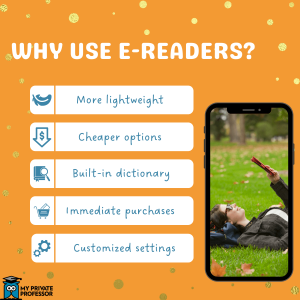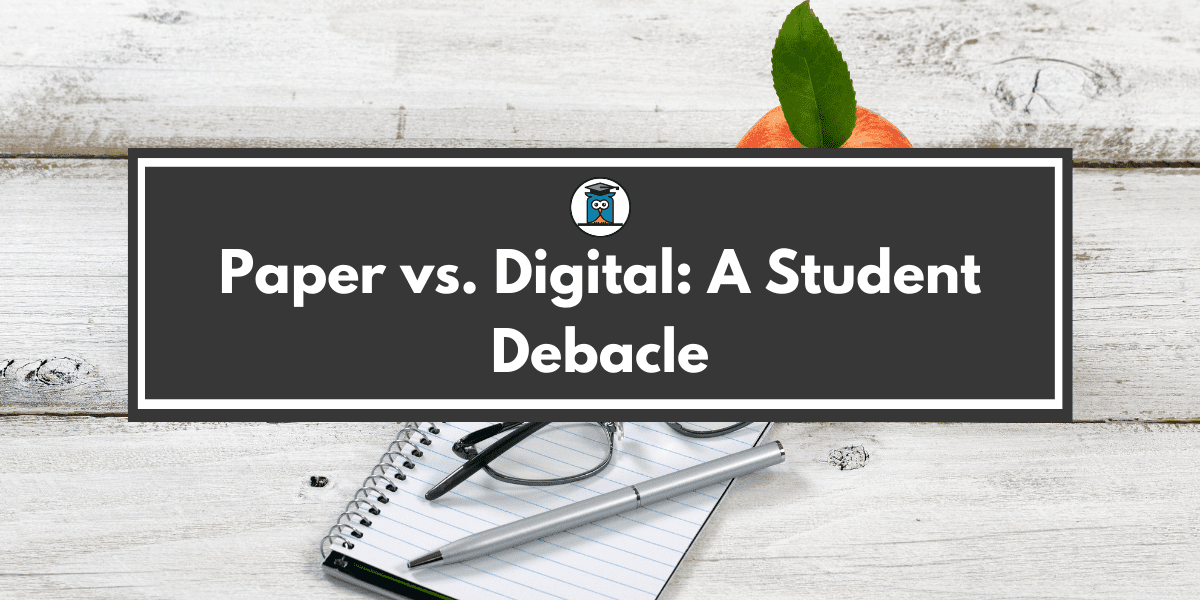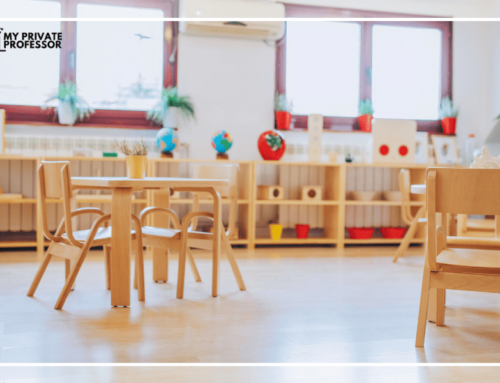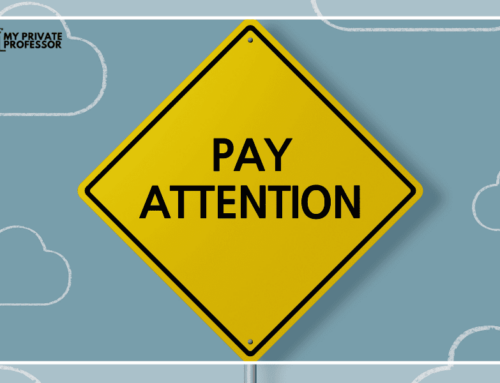Remember when you’d look up from your exam, wondering if anyone else’s hand was close to falling off? Fortunately (or maybe unfortunately), note-taking related pain is a thing of the past for many students. It’s now commonplace to take digital notes—avoiding that cruel, cramping pain.
Not only has note-taking gone digital, but now, many of us opt to read on devices. Whether you use a kindle, nook, iPad, or kobo, e-readers are in, and print might be on the way out. Don’t get me wrong—I’m the first to admit to buying into the e-reader (steadfast Kindle user). And I can confirm that there are definite benefits!
First off, if you’re going on vacation and want to bring along your favorite books, you can bring one device instead of a heavy stack.
Also, you don’t have to wait to go to the physical store, because you have one at your fingertips.
And my personal favorite: you have a built-in dictionary (in most, if not all e-readers)! This means that instead of getting distracted by what “apogee” means, losing your place, and getting caught up in the etymology, you can click on the word, get your definition, and get on with it. 
However, over the past decade, there’s been speculation about whether or not this innovation is actually a good thing. One major argument is that for students, the paper route may be more effective than the device. And there are a few possibilities when it comes to why this may be—for both writing and reading.
Note taking: writing vs. typing
Generally speaking, research has shown that when students take notes by hand, they are better able to remember the material compared to typing.
A study on the differences between writing and typing notes among university students found that handwriting leads to higher recall. However, it’s important to note that one advantage to typing over writing, according to the study, is the ability to put down more words.
(That’s why, when it comes to writing a timed essay, a device will probably be more efficient.)
Another study, “The Pen is Mightier Than the Keyboard, demonstrated that students who typed notes performed worse on conceptual questions than students who handwrote.
So while you’re able to put down more words on your device than by hand, research says writing notes is better for recall and performance. Why is this?
Typing Involves a “Superficial” Cognitive Process
Researchers tend to refer to the cognitive process associated with typing notes as “superficial.” This isn’t because the process is obsessed with its looks. What it means is that taking notes on the computer involves less cognitive effort.
On the contrary, when you handwrite, your brain is more involved.
The writing process includes thinking about, creating, and watching each individual letter shape emerge on paper. While doing so, you’re priming yourself to recall what each one looks like. The result, research demonstrates, is that your brain is required to be more engaged and active.
Now, you may be confused since, with your device, you can take more notes, getting down more information. And that’s good…right? Sometimes.
Often, it seems students fall under the verbatim note-taking spell. That is, students who take notes on devices tend to copy material word-for-word instead of processing the information and reframing it in a way they understand. It seems that the ability to jot down everything the teacher is saying is very powerful—and when you do that, you may fall under the trap of forgetting to actually absorb and process key information.
To put it simply, when you type notes, you very well may absorb and retain less information, which leads to poorer performance. And that’s where the superficiality comes in. It’s more of a shallow cognitive process.
Typing can yield distraction
Another issue with typing notes is that students are—simply due to the nature of computers—more easily distracted.
Regardless of how much self-control you think you have, it can be incredibly difficult to resist checking your email, the news, or social media during a lecture. Then, you have to refocus your attention back on the class material, which pulls time away from note-taking.
Research shows that when college students use laptops, they spend roughly 40% of class doing tasks unrelated to course work.
Reading for school: books vs. e-books
As mentioned previously, reading books on devices does have some benefits, including:
- E-books are often the cheaper option.
- E-books are easier to bring on vacation.
- You can purchase your next read immediately.
- With E-books, if you’re in the dark, you don’t need to disturb anyone by turning on the light.
I mean, really, if the blue-light isn’t bothering you, you may not have any complaints when it comes to reading for pleasure. After all, when reading for fun, there’s not much at stake other than your enjoyment. But reading for school is a whole different ball game—and there’s more at stake.
Reading on paper is better for comprehension
When you read a novel for English or a textbook for chemistry, reading comprehension is a must. You’re expected to take in and understand information, and then further apply it in various contexts.
For the most part, researchers seem to be in agreement that traditional books are superior for reading comprehension.
For example, in a 2018 study, researchers compared screen and paper reading among more than 170,000 participants. They found that printed texts yielded significantly higher reading comprehension. Notably, they highlighted that this advantage was significantly larger when readers are under a time limit.
This is noteworthy for students, because in many cases—i.e. a reading comprehension section on an exam—they are under time constraints.
Physical books have a more obvious topography
When reading, you’re not simply following the words on a page. What you’re doing is part of a more complex cognitive process. As you follow and process the words, you’re subconsciously developing a “mental representation” of the text.
And then, you anchor this representation to the text’s structure. So, when you think back and try to find something in particular in the text, you’re better able to remember where it’s located.
A book’s structure helps you develop this mental representation. You have clearly defined sections which all are associated with how far along you are in the text.
For example you have pages on the left and right, and you have eight corners. Plus, the thickness in one hand indicates how much you’ve read; and the thickness in the other hand indicates how much you have left to read. You can always see the beginning and end of the book, which allows you to see where you are in relation to those borders.
Contrastingly, devices impede your intuitive navigation. And the result is that it’s harder to create mental representations. Then, it’s more challenging to find that one passage or scene that would be perfect for textual evidence in your essay.
“The implicit feel of where you are in a physical book turns out to be more important than we realized,” notes Abigail Sellen, co-author of The Myth of the Paperless Office.
Reading on paper is better for recall
In order to answer reading comprehension questions, you need to be able to retain the information you consume. When you take in all that information for your presentation, you’re not reading it and tossing it away. You’re reading it and retaining it so that you can communicate it during class.
And for recall, research continues to show that paper-based reading is superior to digital reading.
For instance, a 2013 study involving Norwegian tenth graders demonstrated that students who read printed texts scored significantly better on reading comprehension during standardized tests than digital readers.
As noted above, you’re much less able to make mental representations when digital reading. And that’s a key player in your ability to remember information.
Digital reading is more taxing
A contributing reason to why digital reading is seemingly inferior for reading comprehension is that the process—although more superficial—is more strenuous than reading on paper. By strenuous, I don’t mean that you’ll be huffing and puffing after an hour of reading The Hunger Games on your ipad.
Researchers have proposed that when people comprehend less on a screen, it may be due to how digital reading is more physically and mentally demanding than traditional reading.
Why? Screens. This shouldn’t come as such a surprise—by now we’ve all heard the spiel about the blue light and its damaging effects. But often, this is in regard to how blue light can damage sleep or mental health.
Digital reading is incredibly taxing on your brain and eyes— the glare, pixilation, and flickers can cause eyestrain, headaches, and blurry vision. These symptoms are so prevalent, that the American Optometric Association officially recognizes it as a condition. And this, computer vision syndrome, affects almost 60 million people globally.
Not only is it physically draining, but digital reading is mentally exhausting. There are more stimuli coming at you from your screen at all times. And the long term potential consequence is getting burnt out.
Plus, think back to how it’s easier to get distracted when typing versus writing. The same applies for reading. When reading an online textbook, article, or study, there is so much potential for distraction—only one click away.
Digital reading can impair sleep
If you know that screens and their blue light generally do interfere with quality sleep, then you’d assume e-reading would pose the same issues. And you’d be…correct!
Researchers have determined that blue light suppresses melatonin production and in turn, increases alertness. They’ve also found that blocking blue light improves insomnia, which just goes to show that blue light and good quality sleep don’t mix well.
If you’re up the night before an exam reading your ebook on advanced trigonometric identities, you may find that, although you go to sleep thinking you’re prepared, you wake up feeling drowsy and unprepared. And this is because after a night of poor-quality sleep, you’re simply less able to function.
So there you have it! I am by no means saying that you’ve got to toss your beloved e-reader. I certainly won’t. But if you’re a student, tread carefully. It may be in your best interest, when it comes to studying and taking notes, to go back to the traditional route.
The bottom line: whether you opt for a device or pen probably depends on what you’re doing. Either way, you don’t have to give up devices when it comes to school. So keep on using your top-notch studying apps—but consider going pen-to-paper when you’re aiming to absorb and retain more information.
Author: Lydia Schapiro







